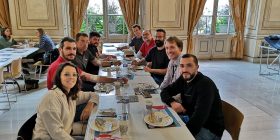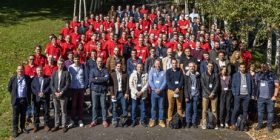Continuous improvement of production workshop performance
If the industry had been content to do what it already knew how to do, without seeking to innovate and improve its processes, we wouldn’t even be talking about Industry 4.0. It is through constant questioning and the quest for continuous improvement that the industry has been able to rise to the challenges and adapt in the wake of the various crises that have hit it.
This macro-industrial observation of innovation and continuous improvement is also applicable at a micro-industrial level in production workshops. This approach needs to generate significant productivity gains quickly and sustainably, without the need for major and sudden changes.
To support these changes and move towards operational excellence, a number of tools and methods have been developed that are widely used on the workshop, such as Kaizen, Six Sigma, 5S, etc.
Continuous performance improvement must be seen as a common thread running through all production workshops.
What is a continuous improvement approach
As we have seen, for a workshop to be sustainable, it must accept change and respond to the challenges that change imposes. In this context, many workshops choose to embark on a continuous improvement approach.
Continuous improvement is an approach to the overall optimisation of all a company’s processes, without ever considering that perfection has been achieved. The improvement approach is therefore based on the principle that it is always possible to do better, particularly by focusing on areas for improvement over the long term.
The aim of the continuous improvement approach in the production workshop is therefore to take action to improve all the company’s processes, by eliminating waste and malfunctions and capitalising on strengths and assets.
One of the fundamental principles of the continuous improvement approach is that it favours a succession of small changes rather than large ones that could destabilise the workshop and its employees.
To sum up, a continuous improvement approach is first and foremost a state of mind. It means constantly questioning processes in order to develop them and improve industrial performance.
How can a continuous improvement approach be implemented on the production workshop
Implementing a continuous improvement approach on the production workshop means reducing or even eliminating “waste”.
The continuous improvement model is based on Lean Manufacturing, which consists of implementing small changes instead of big ones. In this way, driving performance through continuous improvement means taking limited, anticipatable and easily controllable risks. It is an approach that can be used at all levels of the company.
1. Identify areas for improvement
To put in place an effective continuous improvement approach, it is important first to define needs and expectations.
Generally, manufacturers choose either to target and improve the biggest sources of waste, or to improve their greatest source of value.
In any case, every workshop is different and it’s up to you to define the areas for improvement. This could include reducing downtime, optimising production flows, improving product quality, etc.
The use of methods such as root cause analysis and process mapping tools can be invaluable at this stage.
Example of continuous improvement :
- Eliminating waste
- Increase productivity
- Improving production quality
- Reduce production times
- Improving the working environment
2. Involving all operators
Raising employee awareness and involving them in the continuous improvement process is the best way of ensuring that it is applied and that the desired results are achieved.
Nobody is as close to the production tool as the operators, and it is only by collecting their experience and opinions that you will know what to improve and how to improve it. But operators are generally reluctant to change.
Here are a few tips for involving operators:
- Explain the philosophy behind continuous improvement. It’s a gentle method of change that aims to improve processes without major upheaval and involves everyone.
- Training operators. To support this approach and understand the principles of continuous improvement, operators will need initial training.
- Encourage active employee participation. Having proactive and motivated operators is the best way to ensure the success of your continuous improvement initiatives.
- Creating a culture of continuous improvement. By encouraging operators to suggest improvements and take part in meetings, we can involve them in the process and develop a culture within the workshop.
3. Set up key performance indicators (KPIs)
KPIs enable you to measure the current performance of your industrial workshop and monitor the progress of your continuous improvement initiatives.
They can include metrics such as the OEE, the availability rate, the quality rate, the performance rate, the overall rate of return, or more targeted indicators.
Make sure you choose the right KPIs to measure your objectives.
Continuous improvement methods and tools
The continuous improvement process is governed by tools and methods that have been tried and tested since the middle of the 20th century. Following one of these methods will optimise the chances of success of a continuous improvement approach.
Lean Manufacturing
Lean Manufacturing is a production management system that aims to reduce production time by eliminating waste.
By waste, Lean Manufacturing means :
Overproduction, waiting, transport, unnecessary steps, stocks, unnecessary movements and scrap.
The Kaizen method
The Kaizen method originated in Japan in the 1950s in Toyota factories.
It is a management philosophy that encourages everyone to participate in identifying and correcting production-related problems.
Once introduced in the workshop, the Kaizen method emerges as a genuine culture of improvement, where everyone is involved and everything is challenged.
The 5S method
The 5S method, widely used in continuous improvement, consists of 5 steps, each beginning with the letter S in Japanese.
- The first S, Seiri, aims to eliminate anything that is unnecessary for production.
- The second S, Seiton, aims to arrange the tools in the workshop in the best possible way
- The third S, Seiso, aims to carefully clean the workshop and tools in order to be proactive about the state of the workshop and in particular to move towards self-maintenance.
- The fourth S, Seiketsu, aims to standardise the first three steps in order to eliminate any risk associated with failure to comply with them
- The fifth S, Shitsuke, aims to respect the previously defined rules and encourage staff to adhere to them.
The Six Sigma method
The aim of the Six Sigma method is to improve production quality by limiting the variability of the manufacturing process.
It is a “statistical” method because it uses measurable, quantitative data to analyse process performance and identify problems.
Another of its distinctive features is that it is a method that aims to prevent defects and rejects rather than detect them.
MES and continuous improvement
Today, there are a number of obstacles to continuous improvement efforts in the workshops.
The main obstacles are 2 :
- Inability to collect reliable data to measure changes and implement action plans
- The ‘yo-yo’ effect of the results obtained and complicated management of action plans
Indeed, those who have implemented continuous improvement projects without MES software have quickly come up against the lack of reliable data and the Yo-Yo effect, where problems are identified, corrective action is taken, improvements are noted… Then nothing, and performance falls back to its initial level.
The main difficulty with continuous improvement lies in making it sustainable. This is where Aquiweb MES software becomes the best ally for managers and operators.
The data collected automatically and in real time from across the workshop gives a precise picture of performance, enabling the causes to be analysed and action plans to be targeted.
What’s more, data display and distribution tools make it easier to maintain a high level of involvement from all employees.
Specific functions are also available on Aquiweb MES software to support improvement initiatives such as Visual Management, SMED, 5S, Kaizen, etc.



